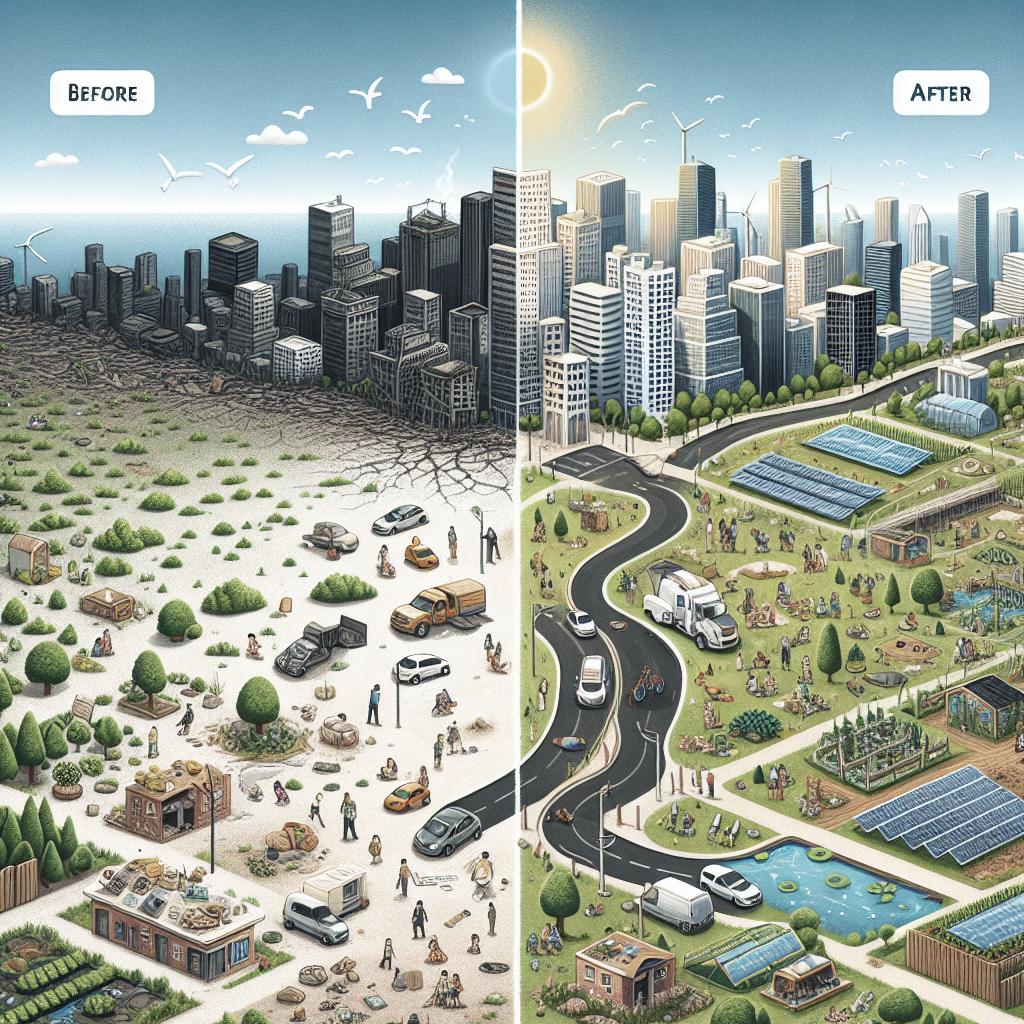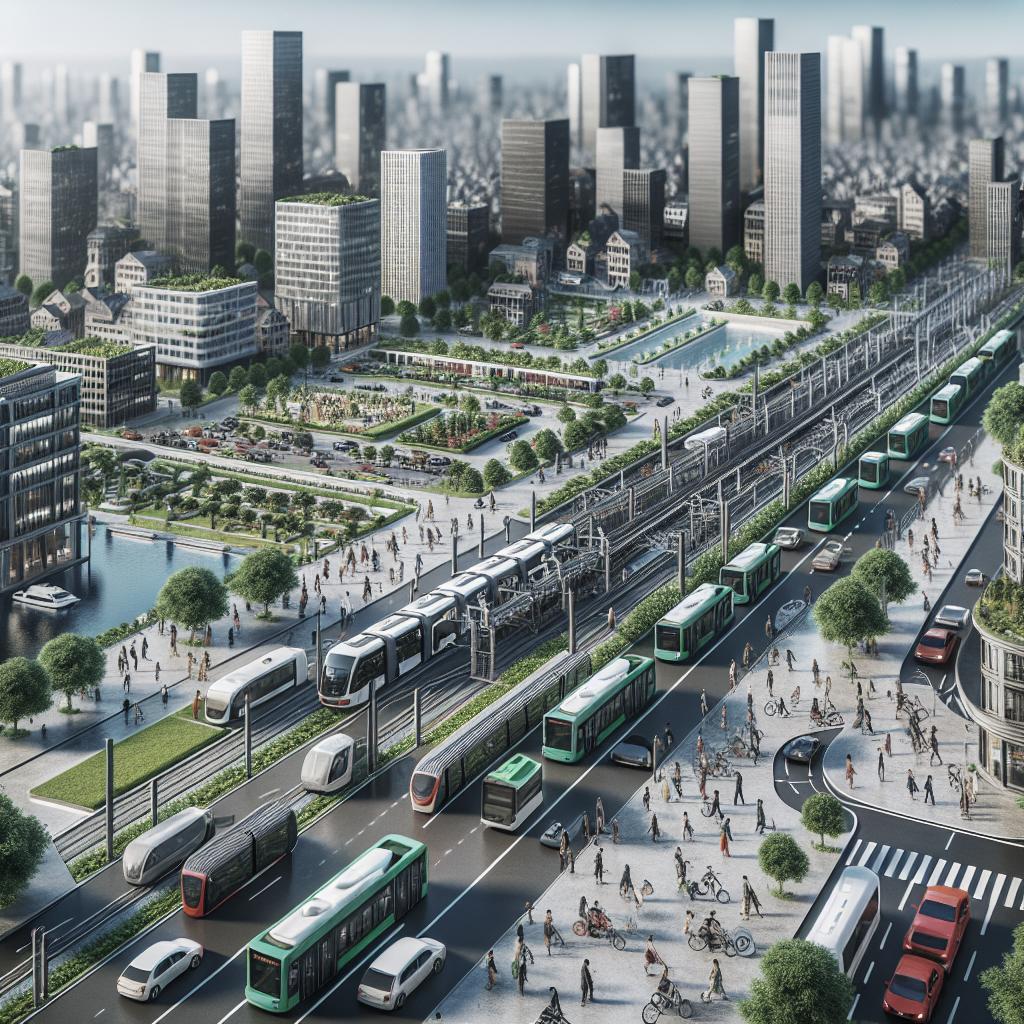<>
“`
Updated April 28, 2023
Urban design is a multifaceted field that blends architecture, engineering, and social sciences to create sustainable and thriving environments. In this blog post, we delve into the essential elements of urban design, drawing insights from Ian McHarg’s influential book, “Design with Nature.” We will explore why planners must prioritize environmental considerations, weigh the needs of city residents, plan for the future, give extra attention to areas in need of renewal, and ensure they have the necessary tools to execute their plans effectively. By examining these elements, we aim to provide a comprehensive guide to the principles that make urban design both an art and a science.
Book Review: Design with Nature by Ian McHarg
Ian McHarg’s “Design with Nature” is a seminal work in the field of urban design and planning. Published in 1969, the book advocates for a comprehensive approach that integrates ecological and social factors into the planning process. McHarg’s methodology, often referred to as “layer-cake mapping,” involves overlaying various environmental and social data to make informed decisions about land use. This book has had a lasting impact on the field, encouraging planners to think holistically and sustainably.
The core message of “Design with Nature” is that urban development should work with, rather than against, natural systems. McHarg argues that understanding the intricacies of the landscape, from soil composition to water flow, is crucial for creating sustainable urban environments. This approach not only minimizes environmental impact but also enhances the quality of life for residents.
McHarg’s insights remain relevant today as cities grapple with issues like climate change, urban sprawl, and resource scarcity. By revisiting the principles outlined in “Design with Nature,” modern planners can find valuable guidance for creating resilient and vibrant urban spaces.
1. Planners must pay attention to the area’s environment.
Understanding the environmental context is the first step in urban planning. This involves assessing natural features like topography, water bodies, and vegetation. These elements play crucial roles in determining the suitability of a site for development and influence decisions about building placement, infrastructure, and open spaces. Ignoring these factors can lead to natural disasters, such as flooding and erosion, and negatively impact the ecosystem.
One effective method for integrating environmental considerations is Geographic Information Systems (GIS). This technology allows planners to analyze spatial data and visualize how different environmental factors interact. By using GIS, planners can identify areas that are prone to natural hazards, assess the impact of proposed developments, and create strategies to mitigate adverse effects. This leads to more resilient and sustainable urban environments.
Another critical aspect is the incorporation of green spaces and natural elements within the urban fabric. Parks, green roofs, and urban forests can significantly improve air quality, reduce heat island effects, and enhance biodiversity. These green spaces also provide recreational opportunities and improve mental health, making cities more livable and attractive.
2. City planners need to consider city residents.
Urban design is fundamentally about improving the quality of life for city residents. Planners must consider the diverse needs of the population, including housing, transportation, healthcare, education, and recreational facilities. Public participation is essential in this process, as it ensures that the voices of various community members are heard and considered.
One approach to involving residents is through participatory planning workshops and public consultations. These forums allow community members to express their needs and preferences, which can then be incorporated into the planning process. This collaborative approach fosters a sense of ownership and ensures that developments are more closely aligned with the community’s needs.
Equity and inclusivity are also crucial aspects of urban planning. Planners must strive to create environments where all residents have access to essential services and opportunities, regardless of their socio-economic status. This can involve policies to promote affordable housing, improve public transportation, and ensure that amenities are distributed fairly across the city.
3. Plans should be forward-thinking.
Urban planning is not just about addressing current needs; it’s about anticipating future challenges and opportunities. Planners must consider factors like population growth, technological advancements, and climate change to create adaptable and resilient urban environments. This requires a long-term perspective and the ability to think beyond immediate concerns.
Sustainable urban development is a key component of forward-thinking planning. This involves designing cities that minimize environmental impact, reduce resource consumption, and promote sustainable lifestyles. Strategies can include increasing energy efficiency, promoting public transportation, and adopting green building standards.
Another aspect is the integration of smart city technologies. These innovations can enhance the efficiency of urban systems, improve public services, and create more responsive and adaptable environments. For example, smart grids can optimize energy use, intelligent transportation systems can reduce congestion, and digital platforms can facilitate better communication between residents and city authorities.
4. Areas in need of renewal need special consideration.
Urban renewal is a critical aspect of urban design, aimed at revitalizing areas that have fallen into decay or are underutilized. These projects can breathe new life into neighborhoods, stimulate economic development, and improve the quality of life for residents. However, urban renewal requires careful planning and consideration to ensure that it benefits the existing community.
One approach to urban renewal is the adaptive reuse of existing buildings. This involves repurposing old structures for new uses, which can preserve architectural heritage and reduce the environmental impact of demolition and new construction. Adaptive reuse projects can transform abandoned factories into vibrant mixed-use developments or old warehouses into cultural centers.
Social considerations are also crucial in urban renewal projects. Gentrification is a common concern, as redevelopment can lead to rising property values and the displacement of long-term residents. Planners must implement strategies to mitigate these effects, such as providing affordable housing options, supporting local businesses, and involving community members in the planning process.
5. Urban planners need the right tools at their disposal to do their jobs.
The complexity of urban design requires a diverse set of tools and technologies to effectively plan, implement, and manage urban environments. Geographic Information Systems (GIS) and Building Information Modeling (BIM) are two essential tools for modern urban planners. GIS allows for spatial analysis and visualization of geographical data, while BIM offers a detailed digital representation of buildings and infrastructure, facilitating efficient design and construction processes.
Data analytics is another crucial tool for urban planners. By analyzing large datasets, planners can uncover patterns and trends that inform decision-making. This can involve assessing traffic flow, monitoring air quality, and evaluating the effectiveness of public services. Data-driven planning enables more informed and effective strategies for urban development.
In addition to technological tools, planners need robust policy frameworks and regulations to guide development. Zoning laws, building codes, and environmental regulations are essential for ensuring that urban growth aligns with broader social and environmental goals. These policies provide the structure within which planners can operate, ensuring that developments are safe, sustainable, and beneficial for the community.
You might also like
- Sustainable Urban Development: Best Practices and Case Studies
- The Role of Public Spaces in Urban Design
- How Technology is Shaping the Future of Our Cities
- Understanding the Social Dimensions of Urban Planning
| Key Element | Description |
|---|---|
| Environmental Considerations | Understanding and integrating the natural landscape, using tools like GIS, and incorporating green spaces. |
| Resident Needs | Considering the diverse needs of residents, promoting public participation, and ensuring equity and inclusivity. |
| Forward-Thinking | Planning for future challenges, focusing on sustainability, and leveraging smart city technologies. |
| Urban Renewal | Revitalizing decayed areas with adaptive reuse, and addressing social impacts like gentrification. |
| Tools and Technologies | Utilizing GIS, BIM, data analytics, and having strong policy frameworks to guide development. |
“`


